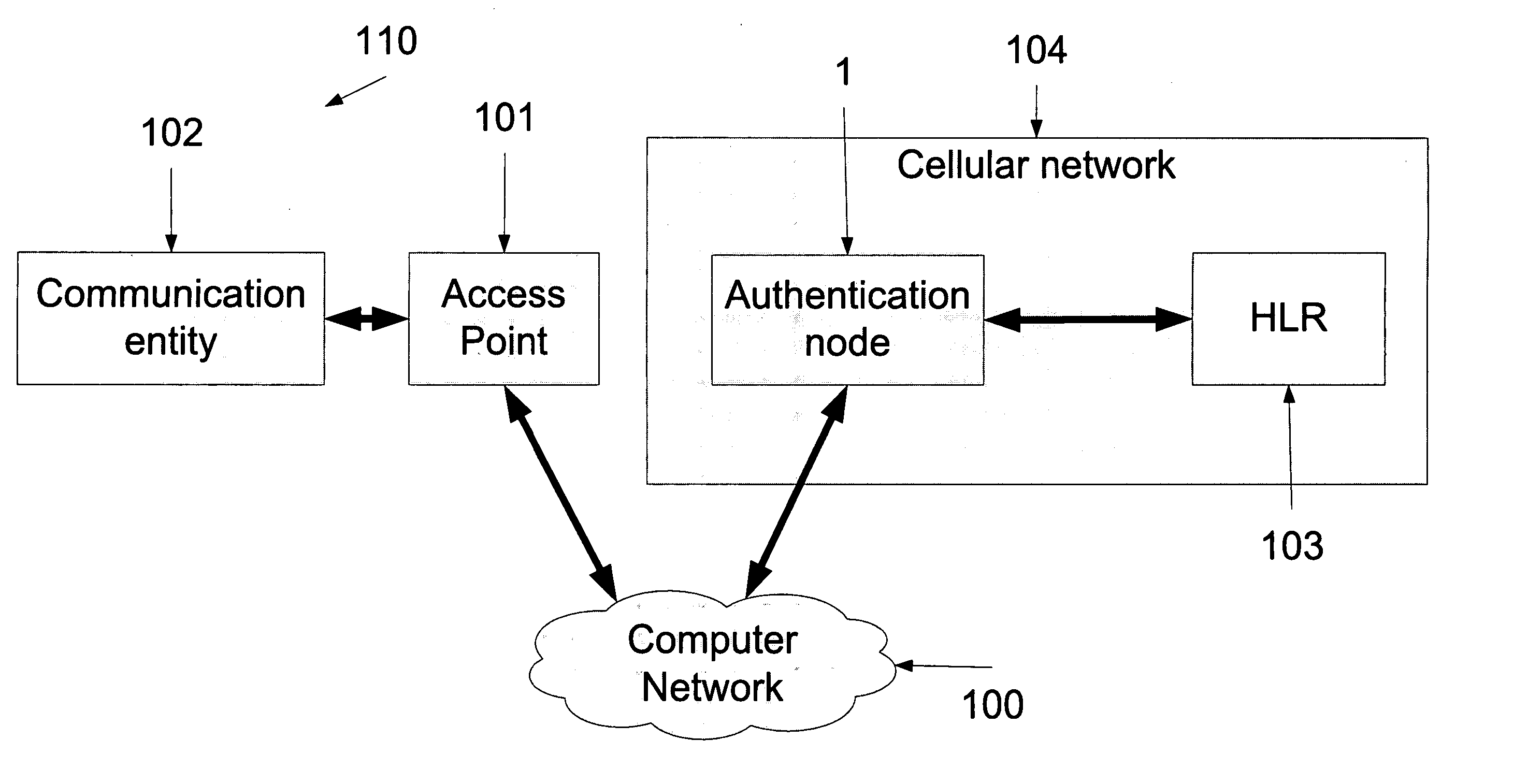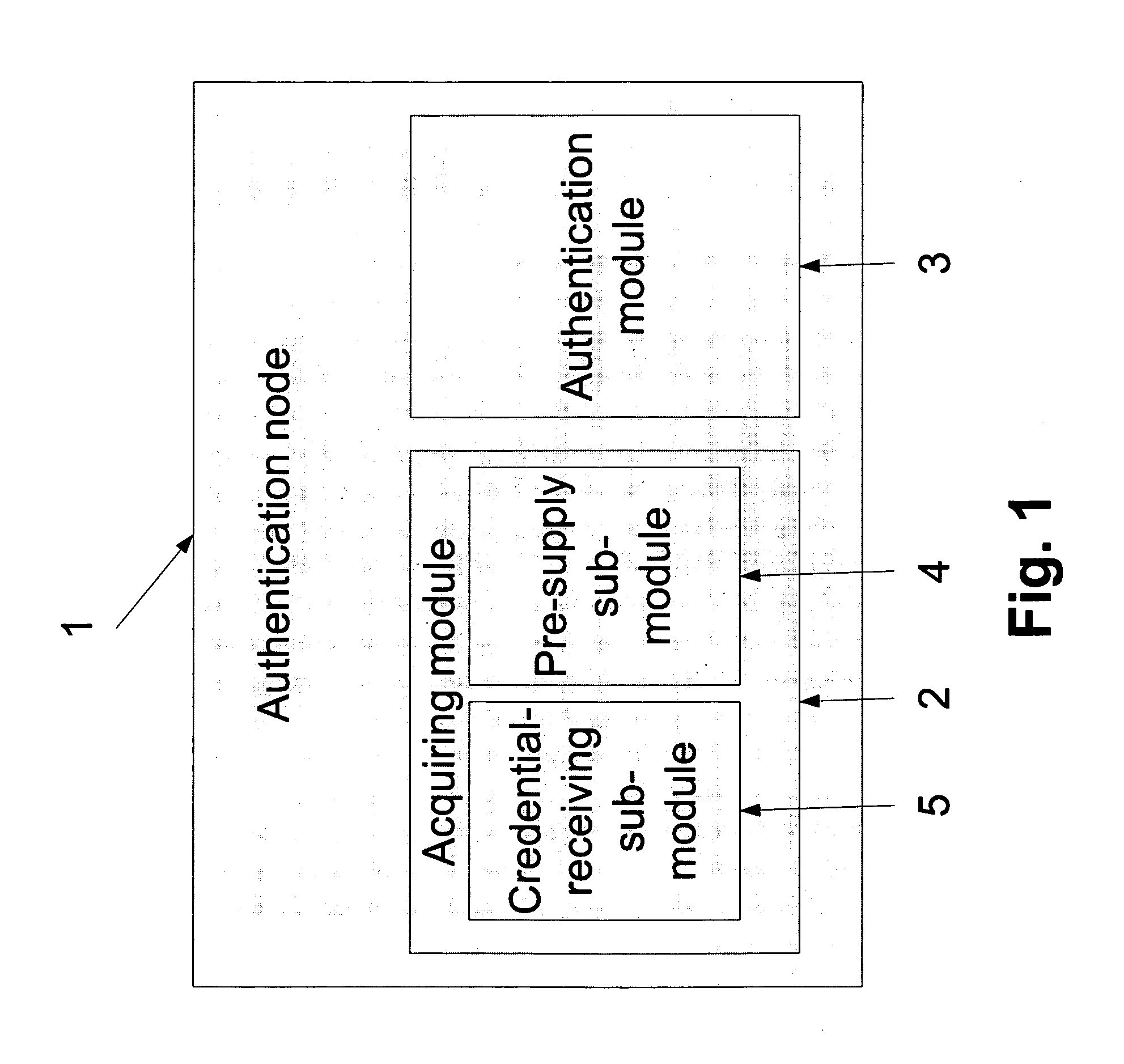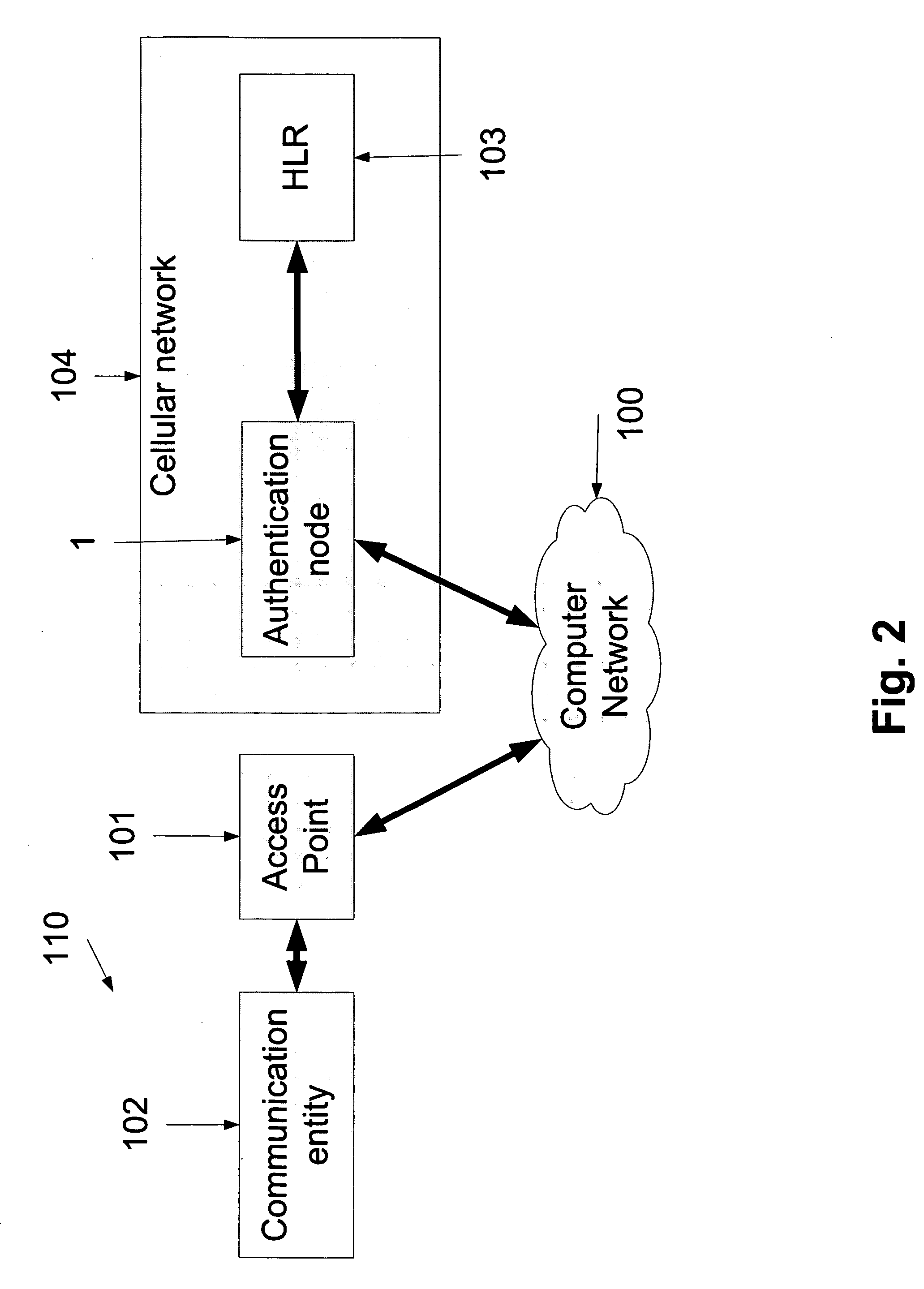Two-phase SIM authentication
a sim authentication and two-phase technology, applied in the field of network access authentication process, can solve the problems of not being able to implement sim-based authentication via a hotspot or any other access point configured according to the commonly used protocols, relatively easy to intercept passwords and therefore considered unsafe, and irregular users face the inconvenience of having to register for passing us
- Summary
- Abstract
- Description
- Claims
- Application Information
AI Technical Summary
Problems solved by technology
Method used
Image
Examples
Embodiment Construction
[0058] The present embodiments comprise an apparatus and a method for allowing SIM-type authentication on conventional hotspots or access points. The GSM challenge is placed in advance on the SIM card and the password field provided by the standard hotspot authentication is used to return the challenge response (SRES).
[0059] Advance placement of the GSM challenge is carried out during a previous IP session with the communication entity. Two alternatives are provided for such a previous IP session. A first method is to obtain challenges during existing IP sessions and cache them for future use, so that the communication entity has a challenge ready in its cache should it connect to a hotspot. A request for authentication is issued to the cellular network and a challenge is produced and cached at both the network and the communication entity for later use.
[0060] A second method is carried out directly at the hotspot and involves authorizing the hotspot to allow a full IP connection ...
PUM
 Login to View More
Login to View More Abstract
Description
Claims
Application Information
 Login to View More
Login to View More - R&D
- Intellectual Property
- Life Sciences
- Materials
- Tech Scout
- Unparalleled Data Quality
- Higher Quality Content
- 60% Fewer Hallucinations
Browse by: Latest US Patents, China's latest patents, Technical Efficacy Thesaurus, Application Domain, Technology Topic, Popular Technical Reports.
© 2025 PatSnap. All rights reserved.Legal|Privacy policy|Modern Slavery Act Transparency Statement|Sitemap|About US| Contact US: help@patsnap.com



